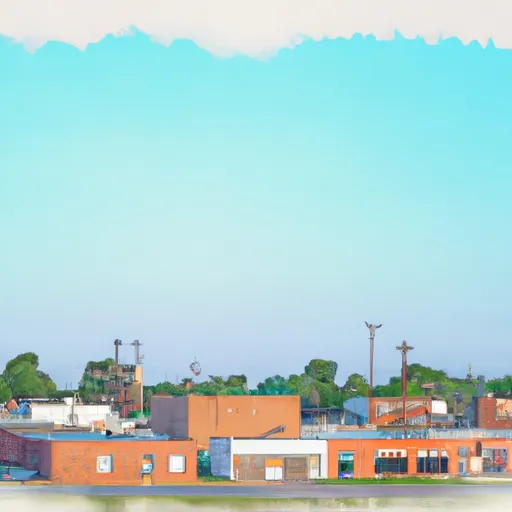-
 Snoflo Premium
Snoflo Premium
Get unlimited access to all our content
With no Ad interruptions! - Start Your Free Trial Login with existing account
Westville
Eden Index
Climate
8.1
•
Recreation
2.4
•
Community
1.4
•
Safeguard
4.4/10

Westville is a small town located in Adair County, Oklahoma. Situated in the northeastern part of the state, it experiences a humid subtropical climate, characterized by hot, humid summers and mild, cool winters. The average high temperature in the summer months is around 90°F (32°C), while winters see average highs around 50°F (10°C). Precipitation is fairly evenly distributed throughout the year, with the wettest months being May and June.
In terms of hydrology, Westville is primarily located in the Illinois River watershed. The Illinois River, known for its scenic beauty, flows nearby and offers opportunities for various water activities such as fishing, canoeing, and kayaking. The river is also a popular spot for camping and picnicking along its banks.
Aside from the Illinois River, Westville is surrounded by picturesque landscapes, including rolling hills and forests. This natural setting provides ample opportunities for outdoor recreation such as hiking, wildlife watching, and hunting. The nearby Cookson Hills Wildlife Management Area offers expansive hunting grounds for deer, turkey, and other game species.
In conclusion, Westville, Oklahoma, offers a pleasant climate with distinct seasons and opportunities for outdoor recreation, particularly centered around the beautiful Illinois River and the surrounding natural landscapes.
What is the Eden Index?
The Snoflo Eden Index serves as a comprehensive rating system for regions, evaluating their desirability through a holistic assessment of climate health, outdoor recreation opportunities, and natural disaster risk, acknowledging the profound impact of these factors on livability and well-being.
Climate Health Indicator (CHI): 8.1
Westville receives approximately
1228mm of rain per year,
with humidity levels near 81%
and air temperatures averaging around
15°C.
Westville has a plant hardyness factor of
7, meaning
plants and agriculture in this region tend to thrive during the non-winter months.
By considering the ideal temperature range, reliable water supplies, clean air, and stable seasonal rain or snowpacks, the Climate Health Indicator (CHI) underscores the significance of a healthy climate as the foundation for quality living.
A healthy climate is paramount for ensuring a high quality of life and livability in a region, fostering both physical well-being and environmental harmony. This can be characterized by ideal temperatures, reliable access to water supplies, clean air, and consistent seasonal rain or snowpacks.
Weather Forecast
Streamflow Conditions
Robert S. Kerr Reservoir
Area Rivers
Robert S. Kerr Reservoir
Snowpack Depths
Robert S. Kerr Reservoir
Reservoir Storage Capacity
Robert S. Kerr Reservoir
Groundwater Levels
Recreational Opportunity Index (ROI): 2.4
The Recreational Opportunity Index (ROI) recognizes the value of outdoor recreational options, such as parks, hiking trails, camping sites, and fishing spots, while acknowledging that climate plays a pivotal role in ensuring the comfort and consistency of these experiences.
Access to outdoor recreational opportunities, encompassing activities such as parks, hiking, camping, and fishing, is crucial for overall well-being, and the climate plays a pivotal role in enabling and enhancing these experiences, ensuring that individuals can engage in nature-based activities comfortably and consistently.
Camping Areas
| Campground | Campsites | Reservations | Toilets | Showers | Elevation |
|---|---|---|---|---|---|
| Beavers Bend State Park | None | 460 ft | |||
| Below the Dam - Lake Wister State Park | None | 462 ft | |||
| Lee Creek Public Use Area | None | 401 ft | |||
| Billy Creek | 12 | 836 ft | |||
| Wards Landing - Lake Wister State Park | None | 519 ft | |||
| Hochatown State Park | None | 640 ft | |||
| Quarry Island - Lake Wister State Park | None | 523 ft | |||
| Winding Stair | 23 | 1,961 ft | |||
| Short Mountain Cove - Kerr Reservoir | None | 499 ft | |||
| Victor Area - Lake Wister State Park | None | 506 ft |
Catastrophe Safeguard Index (CSI):
The Catastrophe Safeguard Index (CSI) recognizes that natural disaster risk, encompassing floods, fires, hurricanes, and tornadoes, can drastically affect safety and the overall appeal of an area.
The level of natural disaster risk in a region significantly affects safety and the overall livability, with climate change amplifying these risks by potentially increasing the frequency and intensity of events like floods, fires, hurricanes, and tornadoes, thereby posing substantial challenges to community resilience and well-being.
Community Resilience Indicator (CRI): 1.4
The Community Resilience Indicator (CRI) recognizes that education, healthcare, and socioeconomics are crucial to the well-being of a region. The CRI acknowledges the profound impact of these elements on residents' overall quality of life. By evaluating educational resources, healthcare accessibility, and economic inclusivity, the index captures the essential aspects that contribute to a thriving community, fostering resident satisfaction, equity, and social cohesion.

